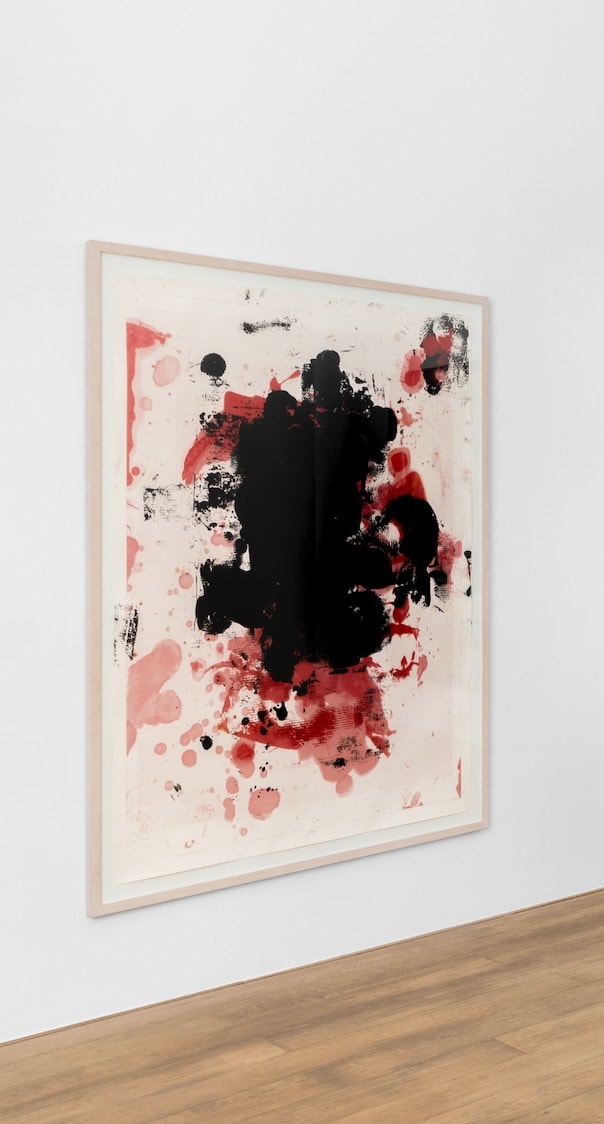



Christopher Wool American, b. 1955
182.9 x 140.3 cm
Further images
Wool’s abstract practice first began to take shape during the mid-1990s, following on from his seminal word and pattern paintings begun the previous decade. The seed was sown with his 1991 artist’s book Cats in Bag Bags in River, in which he dragged photographs of his own works through a photocopier, delighting in the jagged strips of cyan, yellow and magenta toner that scarred the surface of the images. From 1993 he began to transfer this technique to painting, attacking pre-existing motifs with wild brush-loads of coloured pigment. By the turn of the millennium, this approach would give way to his iconic ‘gray’ paintings, consisting of free painterly gestures which Wool would blur and erase with a turpentine-soaked rag. In the present series of works, the artist went one stage further, manipulating his own creations digitally before subjecting them to processes of obfuscation and distortion. Here, unlike the ‘gray’ paintings, colour makes a powerful return, invoking the acid tones of CMYK that had defined the artist’s earliest experiments.
The twin dynamics of production and erasure are closely linked to Wool’s feelings about the status of painting in the post-modern era. The artist came to prominence in the 1980s: a period in which the future of the medium was repeatedly called into question. Many, in the wake of the explosion of Minimalist and Conceptual practices, believed it to be dead. Others, such as Jean-Michel Basquiat, Martin Kippenberger and Albert Oehlen, rode the wave of Neo-Expressionism that swept across Europe and America, deconstructing painting’s traditions in order to visualise new pathways for its development. Wool’s works sat between these two camps, ostensibly championing the medium while simultaneously exuding an uneasy sense of doubt. On one hand, his gestures quiver with the raw vitality of street art, as well as the lyrical, expressive freedom of artists such as Willem de Kooning and Cy Twombly. At the same time, his dalliance with the aesthetics of reproduction and appropriation might be seen to extend the cool, conceptual legacy of Andy Warhol and the Pictures Generation. In the present work, both modes exist side by side, by turns nourishing and undermining one another. It is a powerful expression of the instabilities and contradictions that increasingly define our relationship with images in the twenty-first century.
Provenance
Galerie Gisela Capitain, Cologne.
Private Collection, Basel (acquired from the above in 2011).
The Charles Riva Collection
Exhibitions
Cologne, Galerie Gisela Capitain, Christopher Wool, 2011.
Paris, Museé d’Art Moderne de la Ville de Paris, Christopher Wool, 2012, p. 66 (illustrated, p. 67).
New York, Christopher Wool, New York, Solomon R. Guggenheim Museum, 2013- 2014
Brussels, INTERSECTION, The Charles Riva Collection. September-October 2023.
Paris, LEVEL PART TWO, Galerie Laffanour, September – October 2024.
Literature
H.W. Holzwarth (ed.), Christopher Wool, Cologne 2012, (installation view illustrated, p. 355).
Christopher Wool, exh. cat., New York, Solomon R. Guggenheim Museum, 2013-2014 (installation view illustrated, p. 210).


